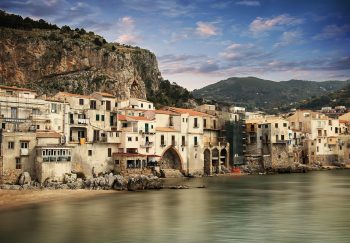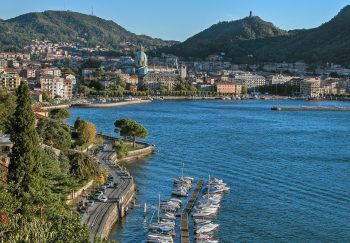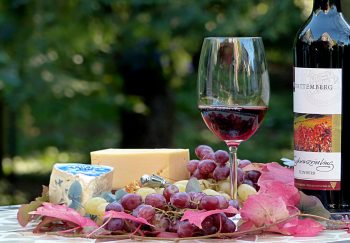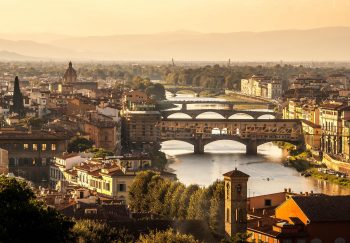Take a stroll around the centre to see many things in a very short time.
Our tour begins in the heart of Palermo at the Politeama Square. This is actually not the correct name. However, Palermo residents love to call it Politeama due to the presence of the magnificent theater, an elegant, neoclassical structure that dates back to the late 1800s and was built by Damiani Almeyda.
Built in 1874, the “theater of people” is a horseshoe-shaped hall that has two rows of platforms and is dominated by a large gallery. It can accommodate up to 5.000 people. The entrance is covered by a bronze quadriga (chariot), designed by Mario Rutelli, and a pair bronze horses by Benedetto civiletti. The Politeama continues to provide us with moments of intense intensity by hosting performances of symphonic musical.
1st step: via Ruggero Settimo
We begin via Ruggero Settimo. This is part of the long road that runs through the city until the Central Station of Railways. This street is considered the most beautiful in the city. This is where you will find the best fashion shops and oldest boutique. Here, Palermo residents make their purchases and take their walks.
Second step: Teatro Massimo
The Teatro Massimo was the third-largest theatre in Europe after the Wiener Staatsoper and Paris National Opera. It opened its doors to the public on May 16, 1897. They presented Falstaff, an opera by Giuseppe Verdi. Among the spectators was Ernesto Basile, son of the designer Giovan Battista Filippo Basile, who designed this theater according to the neoclassical-eclectic style.
The architrave’s large, anonymous inscription warns us that art renews people and reveals the truth about their lives. If it doesn’t seek to build the future, love of art is ineffective. Art is the only tool that can help people develop and recognize other civilizations. The official season for classical music, opera, and ballet is held at the Massimo today. Book a visit.
According to an old legend, if you fall down the steps and land on the step of the monachella while going up the stairs, it is because you didn’t believe in the ghost of the nun who lived before the theater, but now wanders the halls alone at night.
Two pedestrian streets are located opposite the theater. Via Bara is the main street, while via dell’Orologio takes you to the Olivella district, a historical area of Palermo that’s full of small restaurants, artisan shops, and places to get refreshments throughout the day. The great Regional Archaeological Museum Antonio Salinas is located in the square of Sant’Ignazio all’Olivella.
Via Maqueda: Third Step
It was built in the seventeenth-century to create space for new palaces.
4th step: Quattro Canti
Piazza Vigliena is also known as Quattro Canti. It’s an octagonal square that has four attractive facades and richly decorated. The four corners separate the old city into four districts or neighbourhoods (La Loggia Il Capo, la Kalsa, l’Albergheria, and la Kalsa). From here, you can turn to the right towards the Cathedral or the Royal Palace. If we turn left, we can follow the Vucciria Market and reach the sea via the piazza marina. Continue straight and you’ll reach the Piazza della Vergogna and the Martorana, San Cataldo, and the streets full of old artisans (Calderai and Candelai). The Ballaro market. You have the freedom to choose.
5th step: La Vucciria
To the left, we descend to Corso Vittorio Emanuele (Corso Vittorio Emanuele). This street is Palermo’s oldest, dating back to 2,700 years ago by the Phoenicians. It connects the Royal Palace with the sea, and the section you choose to walk down crosses Vucciria Market.
The Vucciria can be accessed via the streets on either side of the Cassaro. They are located just after crossing with via Roma. We recommend you enter via the main entrance. The staircase that leads to Piazza Caracciolo is accessible from via Roma. It is a historical market. It was home to intellectuals and artists in its prime. Fresh fish, aromatic spices, beef and pork are all displayed at the counters. Its charm is precisely its bright colors and peaceful shouting, which accompany the sale of goods and the disarray of its alleys.
Many believe that disrepair is a better way to see the meaning of life than quiet streets lined with trees in a residential area. To the north, the Vucciria is located at the square San Domenico with its large church. This square allows us to rediscover the sun at our exit from narrow streets. A stop in one its cafes is a good way to reflect before enjoying a delicious home-made icecream.
6th step: Piazza Marina (distance 1.2 kilometres)
Continue on the Cassaro until you reach piazza Marina, which is to your right. It is a beautiful area, and you can get lost wandering through the narrow streets or browsing through the artisan shops. In the centre of the square is Villa Garibaldi, a garden by G.B. Basile, the architect of Teatro Massimo, did the unification in Italy in 1860. You’ll find yourself in front of one the oldest ficus trees in Italy at 30m high, with a trunk of 21 metres and 50 metre foliage. This is a huge city monument to greenery. A charming vintage market is held on weekends all around the square, as well as along the streets. The Church of the Chains can be seen in the Cassaro. The chain that closed the Old port at La Cala used to be attached to the church wall a few thousand year ago. The interesting Palazzo Mirto museum, the Steri and the Hotel de France are just a few of the historical palaces around the square. The whole area is rich in art and history, so we recommend Palermo Via.










